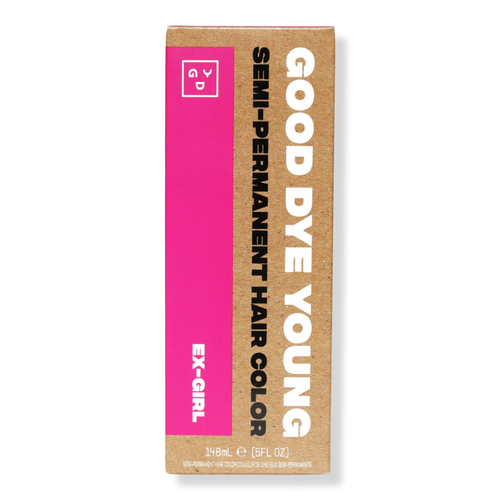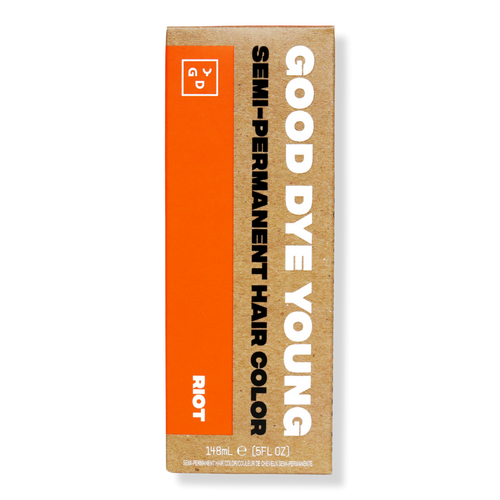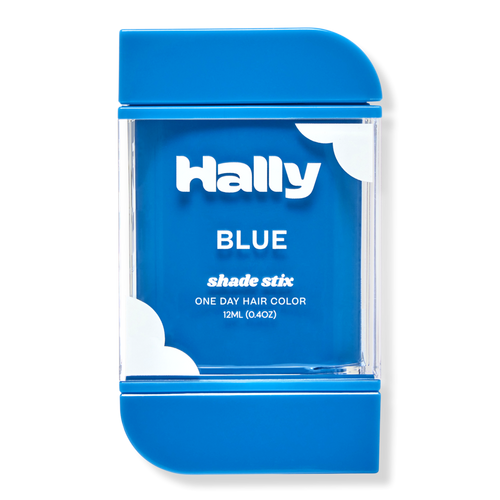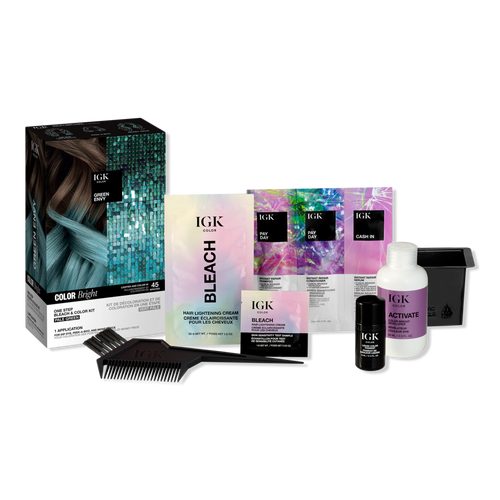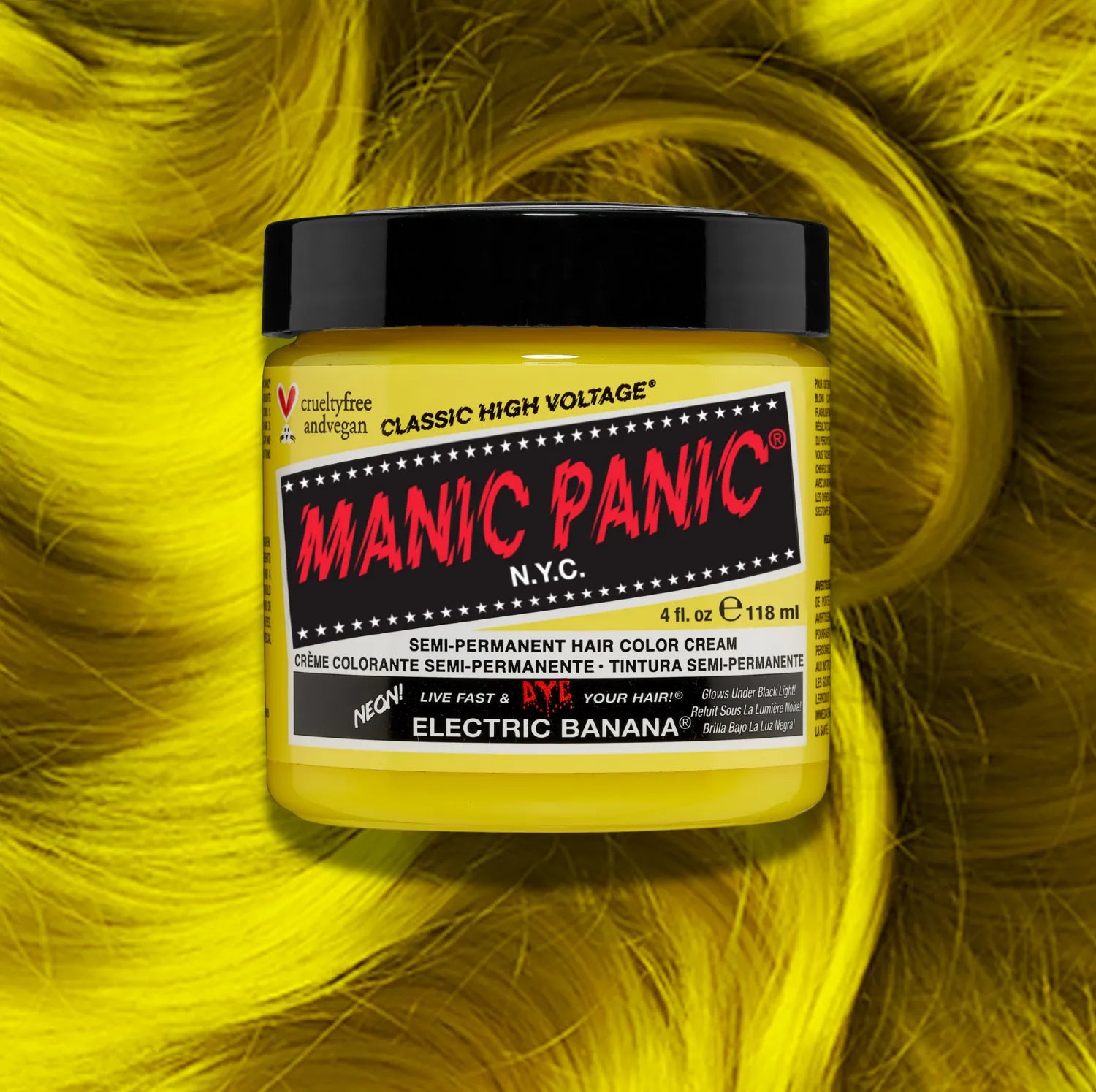The Queer Hair Revolution: How Bright Colors Became an Act of Self-Affirmation
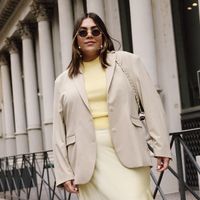
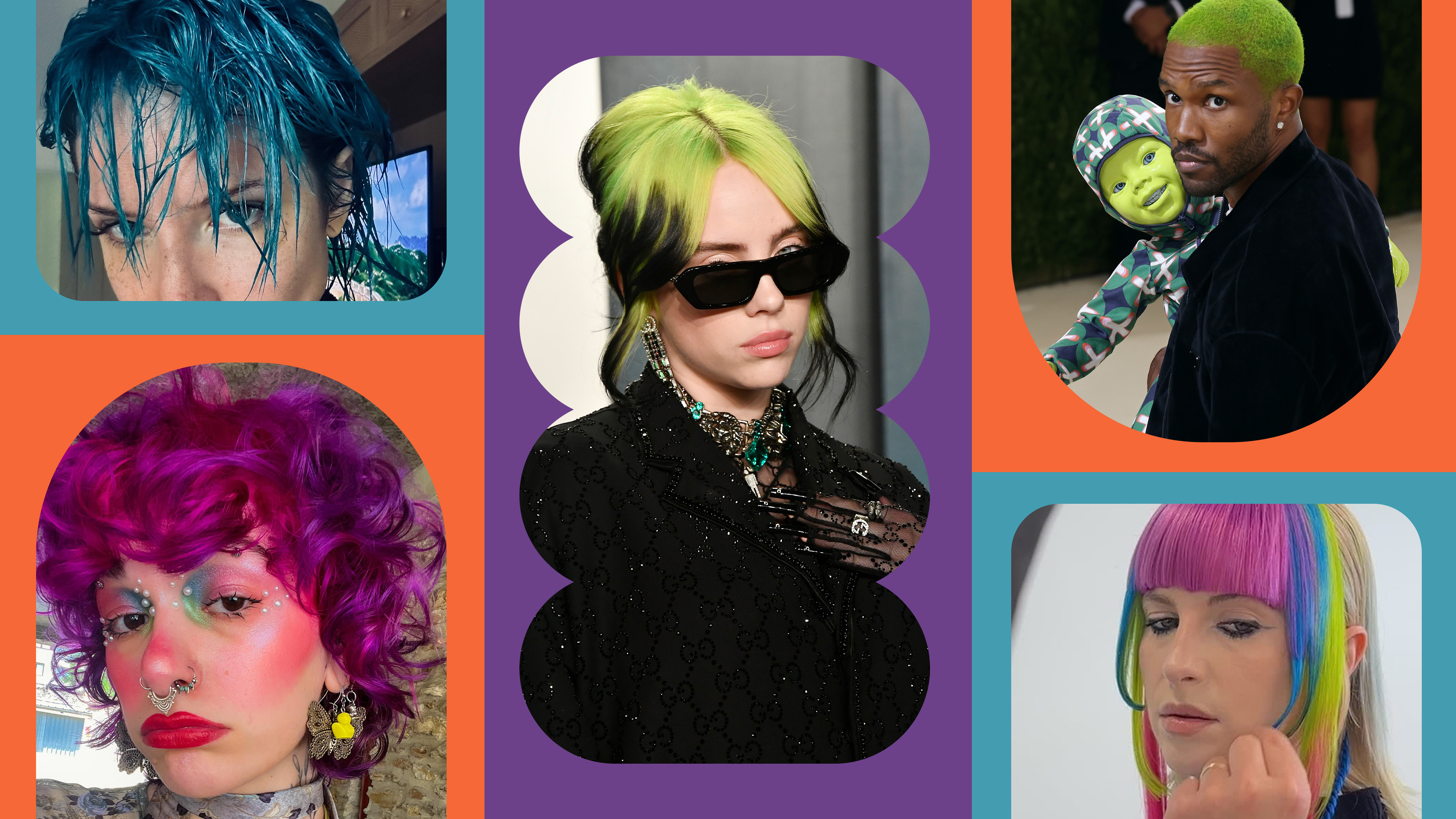
Mags Naylor has heard your "nonbinary barista with colored hair" jokes before. Trust me—they don't want to hear it. It's passé in their salon chair, but not for the reason you might think. "Whenever I do dye someone's hair blue, we always have to make the joke. Oh, you're a blue-haired they/them now because that's, like, a thing" Naylor says. "'But we're doing it in a way that almost makes fun of people who have those views."
Still, the stereotype persists, and it's worth busting right away. Not every queer person has bright fantasy hair. For many, though, vibrant color is a powerful way to express their identity.
For the last three years, Naylor has run Exhibit Salon—a queer-owned hair salon in Greenpoint, Brooklyn, specializing in gender-affirming haircuts, vibrant hair color, and inclusive grooming. Despite the ever-looming political threats out of Washington, DC, aimed at dismantling LGBTQ+ rights, business is thriving, and so is rainbow-colored hair dye. None of Naylor's clients have abandoned bold colors out of fear of being targeted or perceived as "too queer." If anything, Naylor says, more people are doubling down on fantasy shades and refusing to dim themselves, even in uncertain times.
"There's a joy that's being associated with it," Naylor explains. "It's also a way to flag someone else that their politics or their beliefs exist in a world where the culture is getting more conservative."
For many queer and gender nonconforming folks, beauty isn't just about aesthetics. It's a way to reclaim identity, affirm presence, and take up space unapologetically. Hair, like clothing and accessories, has long been used as a silent signal, a means of expressing who you are before you say a word. In today's political climate—where even pride pins and fruit-shaped hair clips can be read as statements—nothing declares it louder than shaving your head and dyeing it green.
"Dyeing your hair is a choice you to make, and in a climate where a lot of choices are being taken away again, it's a radical act that leads you to feel better about yourself," Naylor notes. "When you go to a salon and … have bright yellow hair all of a sudden, you can look at yourself with joy."
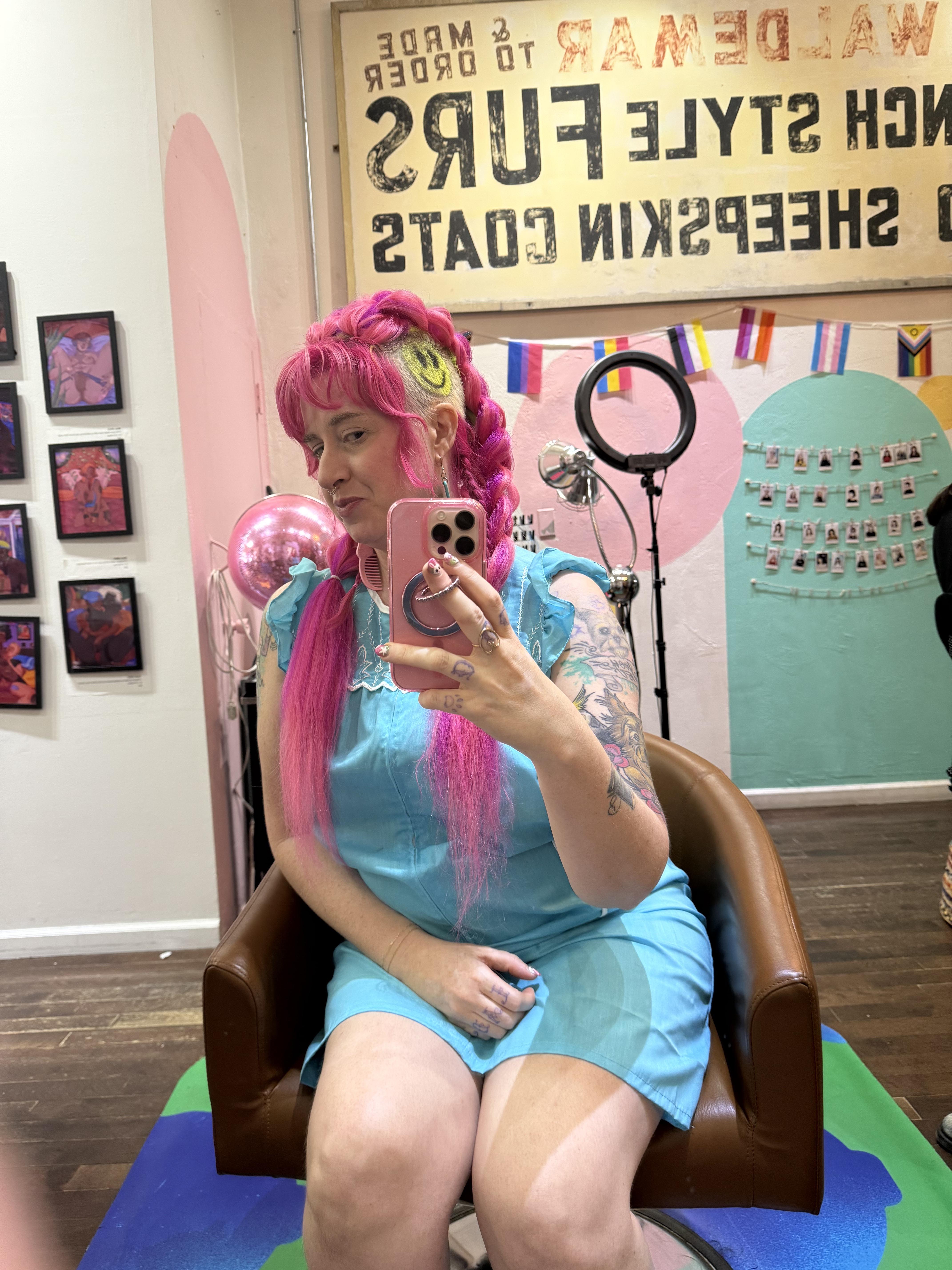
Fantasy hair color is a way to take up space unapologetically and be seen on your own terms—sometimes even before you're ready to speak out loud. For Richard Gallo, a senior beauty director at a New York City based public relations firm, the choice to experiment with hair colors began long before Gallo was even out to himself. Growing up in a religious household, Gallo remembers flipping through early-'90s hair magazines in salons and convincing his dad to buy him Joico Ice Spiker Colorz. "I'd always center my Halloween costumes around something that would allow me to do a different hair color," Gallo admits. After the costumes were packed away, the hair gel remained—a secret indulgence he'd revisit behind the closed door of the bathroom.
"At the time, I didn't know I was gay, but dyeing my hair was a way to express myself," he says. "I knew that there were parts of me that liked beauty and experimenting with my hair." The punk-rock and emo scenes of the early aughts gave him cover. It was a space where bold hair colors weren't questioned. They were celebrated. Dye became a kind of camouflage, a way to explore parts of himself that he hadn't yet found language for. If Gerard Way could have bright red hair and be seen as cool, why couldn't Gallo? "I was coming up with any excuse to dye my hair, honestly," he adds.
Hair gels turned into Splat-dyed highlights that turned into full-blown bleaching by the age of 18 when Gallo went off to college. There, in the comfort of a friend's apartment bathroom and away from the prying eyes of his hyper-conservative hometown, Gallo's interest in fantasy color began to flourish. "It was just fun. It was freeing. It was liberating in a way. I didn't care what people thought about me, and [it] allowed me to express myself in a way I had never been allowed to," Gallo says. "In college, people loved me for who I was and how I wanted to put myself out there—in this case, dyeing my hair different colors."
Since then, Gallo has had every iteration of hair color you can think of, all thanks to a trusted team of stylists he's worked with over the years through his job—silver, blue, fuchsia, green with blue zigzags, and even a shade he lovingly calls Ronald McDonald red. "My head was like a canvas. I was like, 'Paint me like one of your French girls!'" Gallo says. "It's always been a journey for me and my hair." It was never just about the color—it was about the version of himself he unlocked when he finally stopped asking for permission.
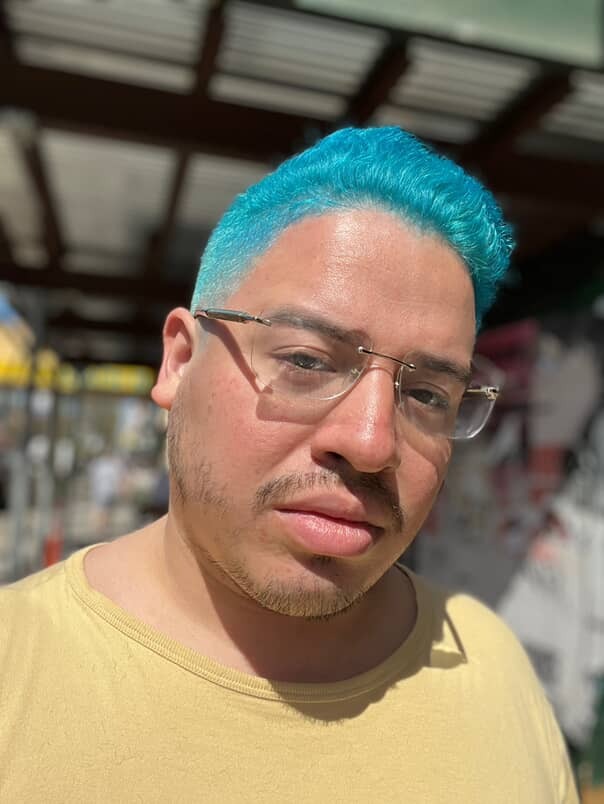
What started as a quiet form of self-discovery has since become a loud, joyful declaration, one strand at a time. Gallo isn't alone. Whether it's a tried-and-trusted hair-dye company from the early 2000s or a celebrity-backed brand, fantasy hair dye means a lot in terms of queer joy and authentic expression.
Brian O'Connor, Nashville-based hair colorist and cofounder of Good Dye Young, views fantasy color as a radical act of individuality. "We are taught from a young age to try and blend in," he says. "When you are queer identifying, I think that fantasy hair is one way to outwardly show your individuality. It is your way of showing up for yourself and no longer caring about societal norms."
Though O'Connor's work champions all kinds of self-expression, his most famous muse might be Hayley Williams, Paramore's frontwoman. Her fiery "Misery Business" hair didn't just define an era—it showed a generation, queer and straight alike, it was okay to wear weird hair colors and just be themselves. (Williams is the other cofounder of Good Dye Young, giving fantasy hair dye a celebrity stamp of approval.)
For many of O'Connor's LGBTQ+ clients, that first bold color signals a deeper transformation. "In my experience, the personal shift you notice is the realization when you see yourself—they are seeing the most authentic version of themselves," he explains. "When you have the opportunity to spin someone around and see the transformation, you see the joy in their eyes. Having someone in my chair who feels safe and confident is the shift that every stylist strives for."
The stereotype that all queer people have brightly colored hair is, O'Connor says, an oversimplification, but it reflects something real about visibility and community. "It's a false narrative. Anyone can have brightly colored hair. For some, it is part of their coming-out story, but the journey for someone to feel uniquely themselves is the greater goal," he explains. Fantasy hair color is one way queer folks claim space, but it's far from the only one. "Art, clothes, music, and political standpoints are all rallying calls for the greater good, he adds.
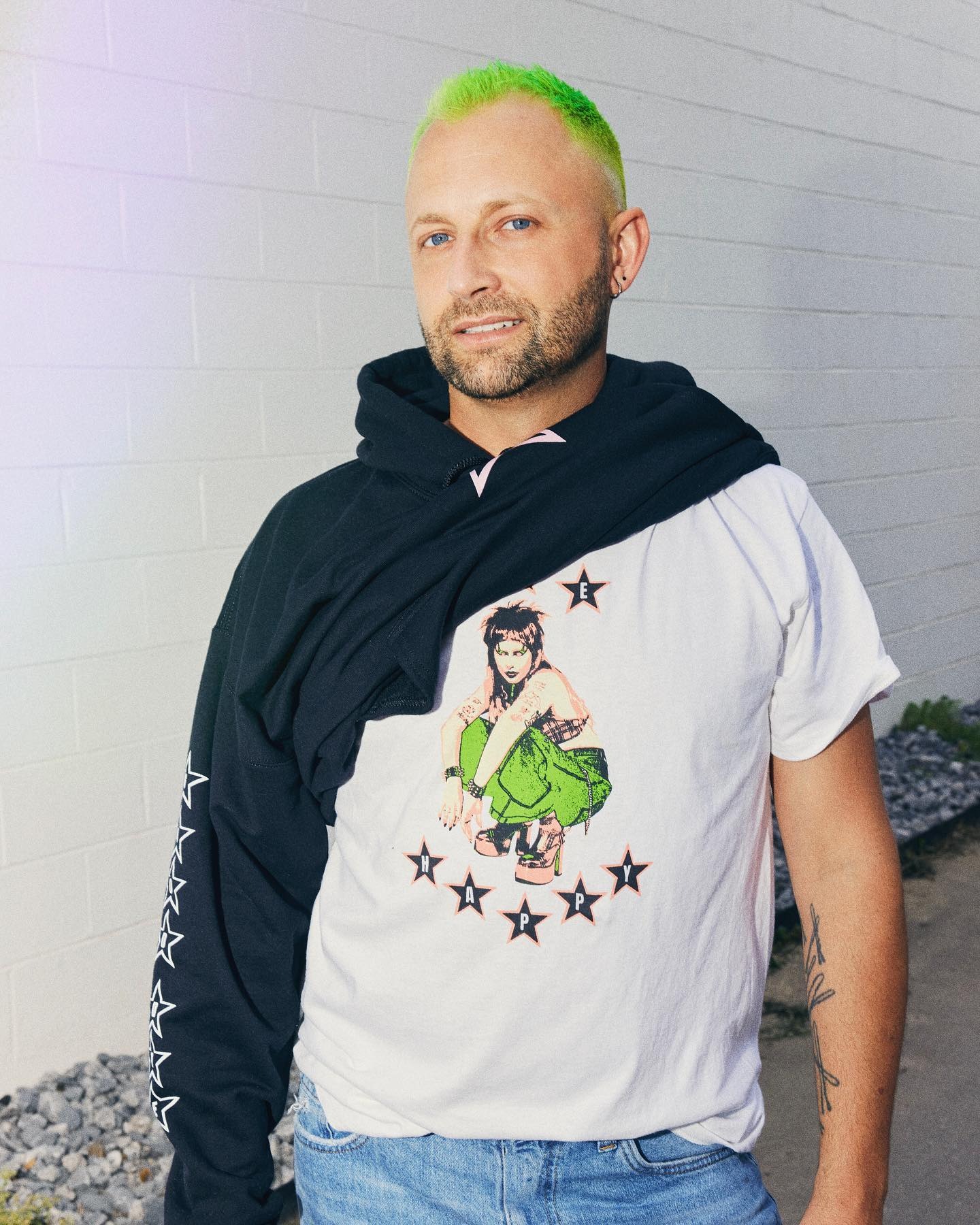
At its core, fantasy hair color is a living, breathing manifesto. It's joy and defiance wrapped into one vibrant package, a refusal to blend quietly into a world that too often demands conformity. For queer and gender nonconforming folks especially, it's a powerful language of visibility spoken fluently without words.
"When I first started, I used to think 'Oh, it's just a hair appointment,' but it's really much bigger than that," Naylor, whose Greenpoint salon has become a beacon of hope, says during the final moments of our call. "For the first time, people know what they want to do with their hair, and it's so precious and meaningful. Queer people are taking ownership of how people view them in a very loud and visible way."
In an era when the right to simply exist as your true self is under constant scrutiny, each bold color is more than a style choice. It's a form of resistance. It's a declaration that joy and authenticity cannot be legislated away. The next time you catch a flash of electric blue, fiery red, or bubblegum pink, remember this: Hair color can be an unapologetic statement, not just a trend. In a culture still wrestling with acceptance, wearing your colors loud and proud is one of the most revolutionary things you can do.
Shop Fantasy Hair Dye

Ana Escalante is an award-winning journalist and Gen Z editor known for her sharp takes on fashion and culture. She’s covered everything from Copenhagen Fashion Week to Roe v. Wade protests as the Editorial Assistant at Glamour after earning her journalism degree at the University of Florida in 2021. At Who What Wear, Ana mixes wit with unapologetic commentary in long-form fashion and beauty content, creating pieces that resonate with a digital-first generation. If it’s smart, snarky, and unexpected, chances are her name’s on it.
